“I learned the hard way so you don’t have to.” Jumping tips from Ninja Instructor Jeremiah “Scratch” Stone.
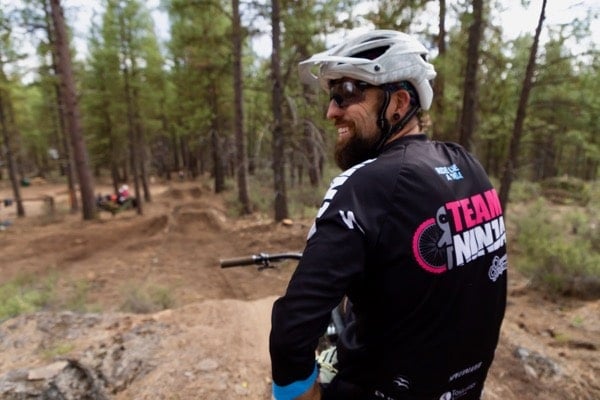
My relationship with jumping bikes started young and blossomed over three decades of boosting every single thing I could find or build. As a kid, I liberated wheelbarrows full of dirt from my Mama’s garden to build a jump. From there, I worked up to dirt jumps, table tops and gap jumps. With no instructor to point out my mistakes, I wiped out in every single way possible. I learned how to jump the hard way; with bumps, bruises and broken equipment. Lucky for you, I’m here to help you skip the painful lessons and get right to the good stuff. Here are my 5 Tips for Jumping Success:
1. Bike Setup
Set your sag properly! The term sag refers to the amount of suspension travel that is used when you are on your bike in a riding position. Not sure how to set your sag? Here’s how.
Remember, your shocks, just like tires, will lose a little pressure over time. Make sure your pressure (aka sag) is set correctly periodically to ensure your bike is riding to its full potential.
Next, learn about rebound (the rate at which your suspension returns after a compression) and tune it. The key with this is balance. You want your front and rear suspension behaving similarly. I prefer my rides at about 20% sag with fast rebound action. To check if rebound is balanced, pay attention to how the bike behaves when you bounce it. From there, ride into a section of trail you’re familiar with over and over again. Is the rear end coming up too much? Is the front end diving? If you feel yourself bouncing on landings, your rebound might be set too quick. Think of it like two pogo sticks – get them to work together!
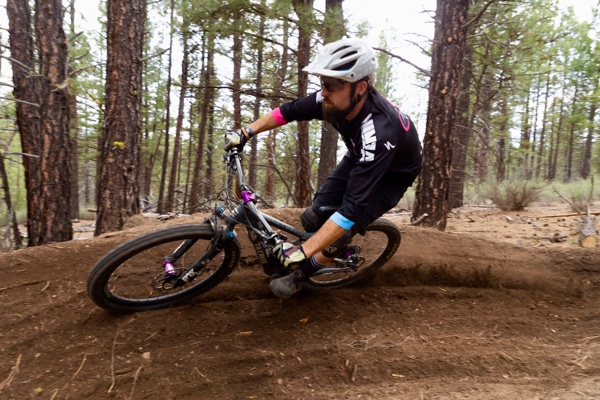
2. Mental Approach
There’s a concept in trail building (and riding) that every feature is there to serve the next. Think about this: that berm is there to serve the next section by redirecting you and giving you the platform to enter it with more momentum. That roller is there for pumping or speed checking or maybe preloading. Don’t fight the flow of the trail – learn to use it to your advantage.
Now, apply this concept to jumping! Most jump lines are ascending, a type of crescendo where each jump leads you into another as they increase in size, hang time, intensity, etc. The face of the jump serves the landing. When I approach a jump, my main concern is where and how I want to land.
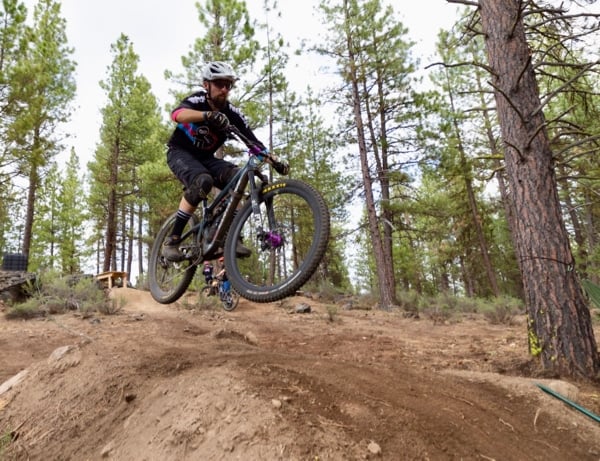
3. Control the Bike
Don’t get lazy halfway through. This usually leads to a “dead sailor” or “pencil” effect where pretty much nothing goes right and you look like a dork. Commit to placing the bike on the landing. Think about pumping the backside, pushing the bike into the landing when you get there and rolling it out clean. For me, I commit to a little bit of hip movement from the very beginning. It helps me maintain control, keeps my body and mind in tune, and sometimes turns into a steezy little whip action. From the innocent bystander’s point of view, it looks intentional and awesome. Inside my mind, this little movement gives me something to focus on in flight, which helps my entire body and nervous system do what it needs to do.
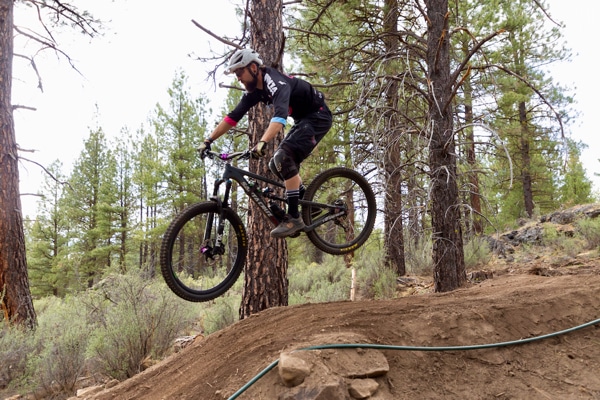
4. The Landing is What Matters
Begin with the end in mind (for all my 7 Habits nerds out there). What’s the goal? Hopefully the goal is the clear the jump and make it look effortless (and cool).
Pop Quiz! Where should you be landing?
a) The very peak tip top edge after the gap
b) The edge of the tabletop where it first starts to descend
c) The flat area just past the jump
d) The meaty part of the decline where your whole bike has a great landing surface and nice run-out.
Ding ding ding ding! If you answered “d”, you are correct. If you aim short, you’ll come up short and case the jump (whomp whomp). Your landing is well past that edge or peak.
Put the bike on the landing. Read that again. PUT the bike where you want it. I see so many people think that all they have to do is mash into a jump face and somehow the universe will just take care of them. Remember, the face and lip of a jump is just the beginning. It’s the landing that you need. More details on The What, Why and How of Jumping your Mountain Bike.
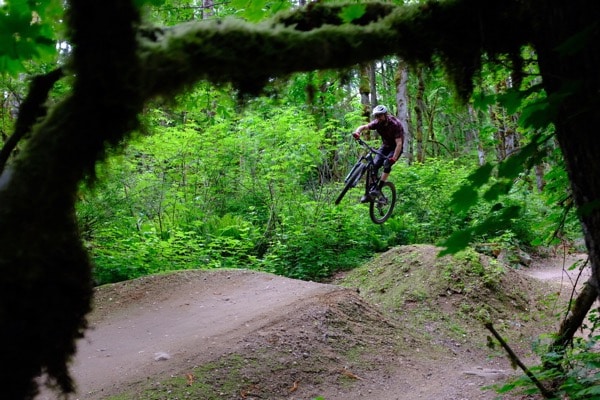
5. Be Mechanically-minded
Think about the mechanics of what is going on when you are jumping your bike. Geek out and think physics. Force, inertia, all that stuff. Then you’ll start to read jumps and anticipate how they’ll affect you. Jumps with a bigger face may feel earlier to learn on than jumping with a small face, because your entire bike fits on the face. Small face jumps on the other-hand can feel like you are jumping twice – once with the front end, then the rear. Steep faces will send you up. Mellow faces are usually easier to control because they have less influence on the bike and body. Step ups are more forgiving because they take a lot of the drop out of play, so you essentially only have to get the first half of the jump correct. Step downs are easier to over shoot and therefore need plenty of room to land. If you can consistently clear a 10ft table, you can clear a gap with the same characteristics.
Now it’s time to go ride your bike and have the most fun possible!

This post is well enough to understand the advantage and disadvantage between road bike and mountain bike. Your provided ideas are very helpful for the bikers. I’m little bit confused of which one is much better for me. Now I fix my decision. I should thanking you a lot for this unique ideas.
I love the 7 Habits reference!
I use that all the time when teaching cornering, Enter with the Exit in Mind!!